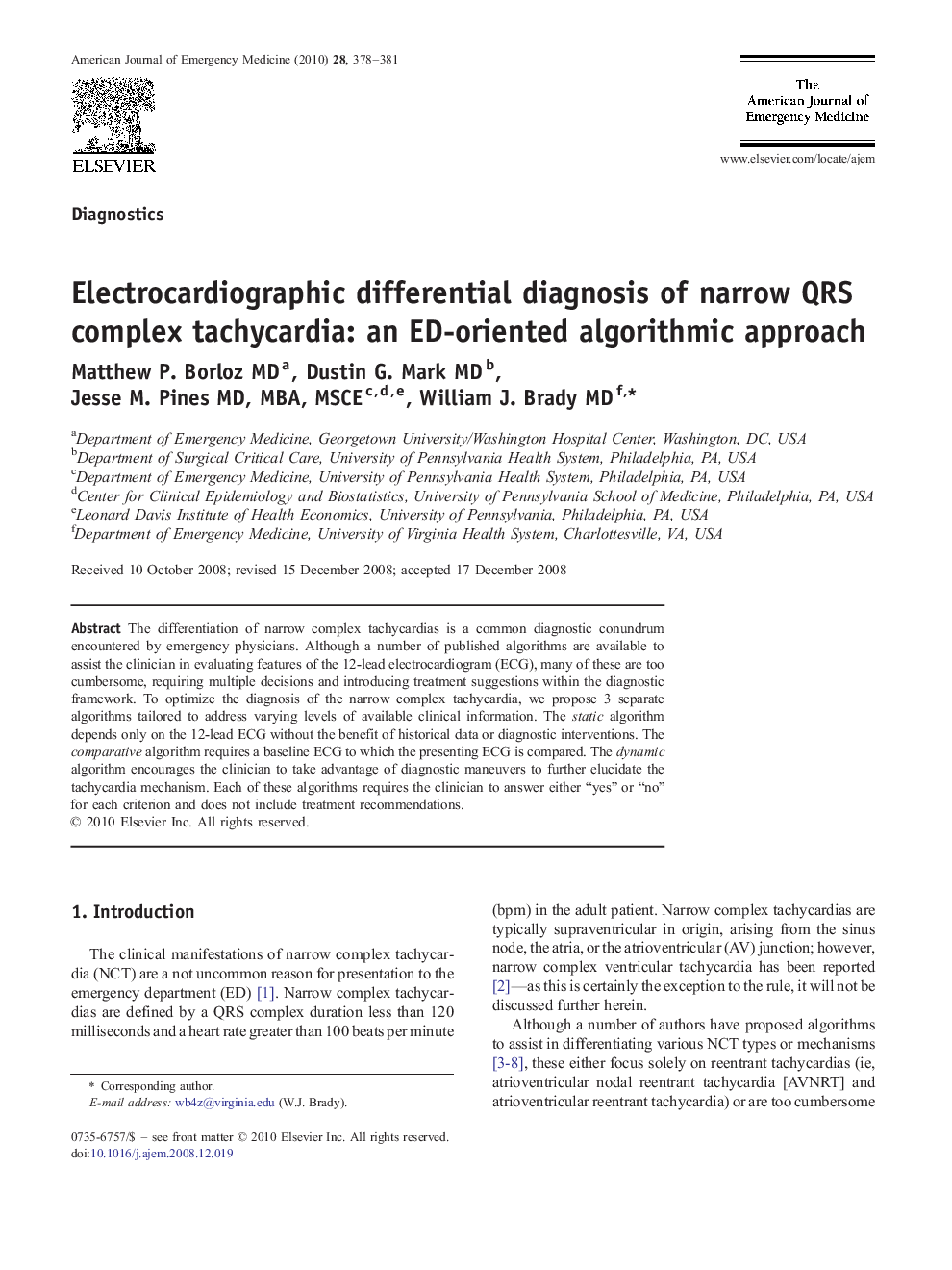| Article ID | Journal | Published Year | Pages | File Type |
|---|---|---|---|---|
| 3226252 | The American Journal of Emergency Medicine | 2010 | 4 Pages |
The differentiation of narrow complex tachycardias is a common diagnostic conundrum encountered by emergency physicians. Although a number of published algorithms are available to assist the clinician in evaluating features of the 12-lead electrocardiogram (ECG), many of these are too cumbersome, requiring multiple decisions and introducing treatment suggestions within the diagnostic framework. To optimize the diagnosis of the narrow complex tachycardia, we propose 3 separate algorithms tailored to address varying levels of available clinical information. The static algorithm depends only on the 12-lead ECG without the benefit of historical data or diagnostic interventions. The comparative algorithm requires a baseline ECG to which the presenting ECG is compared. The dynamic algorithm encourages the clinician to take advantage of diagnostic maneuvers to further elucidate the tachycardia mechanism. Each of these algorithms requires the clinician to answer either “yes” or “no” for each criterion and does not include treatment recommendations.
